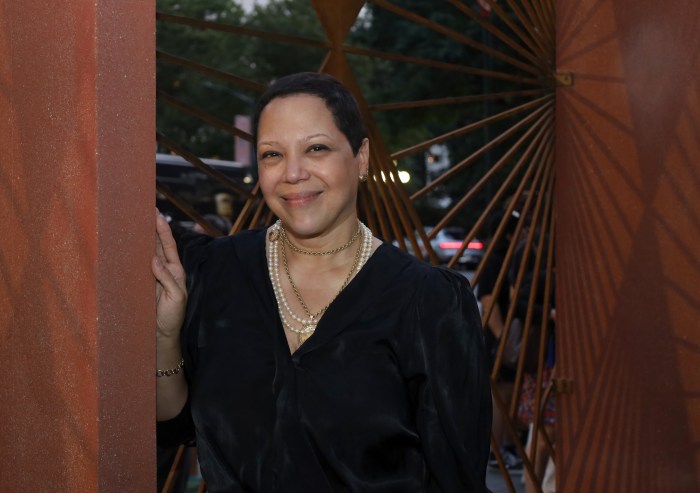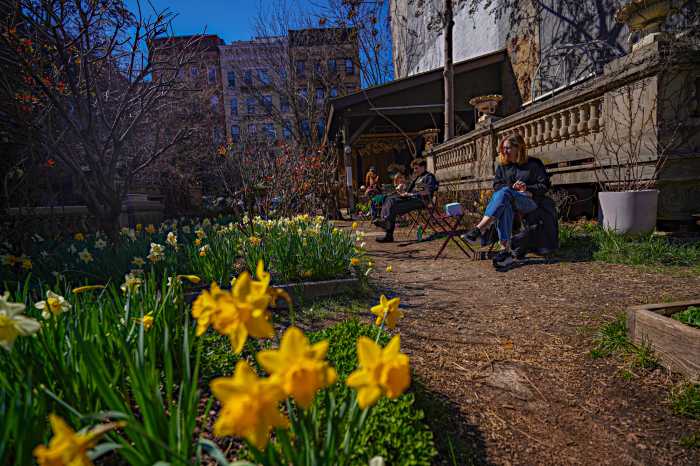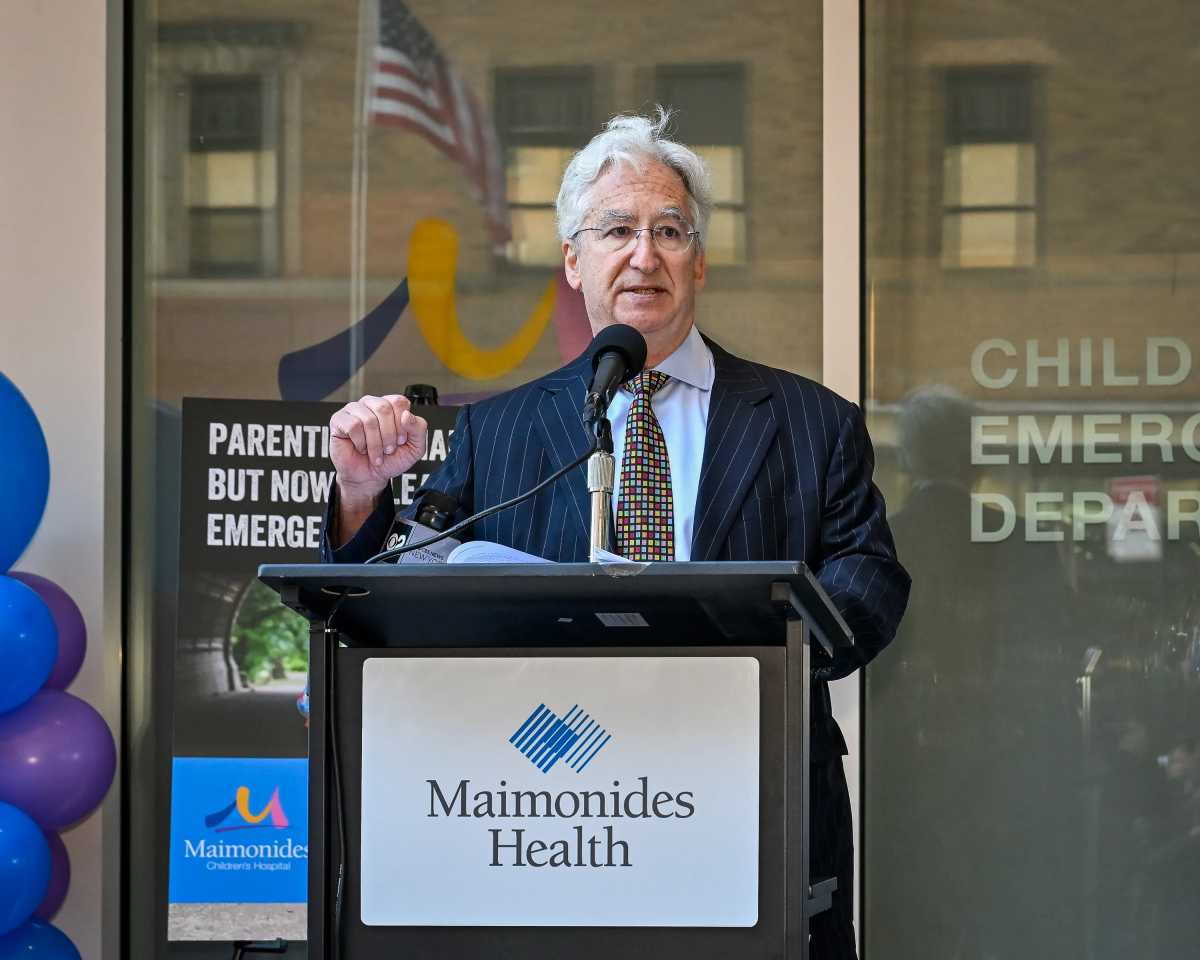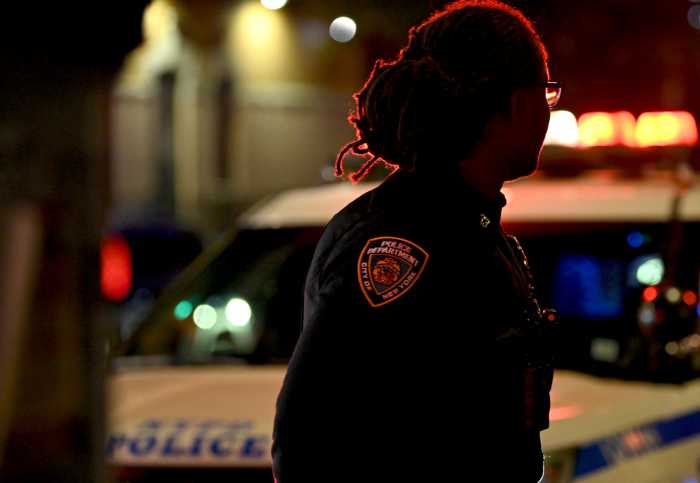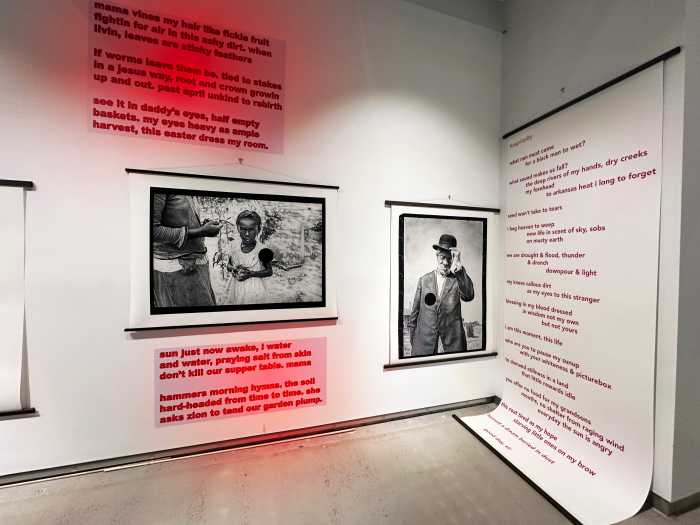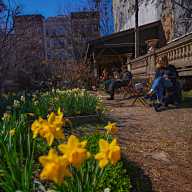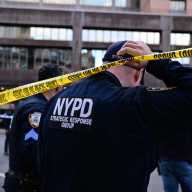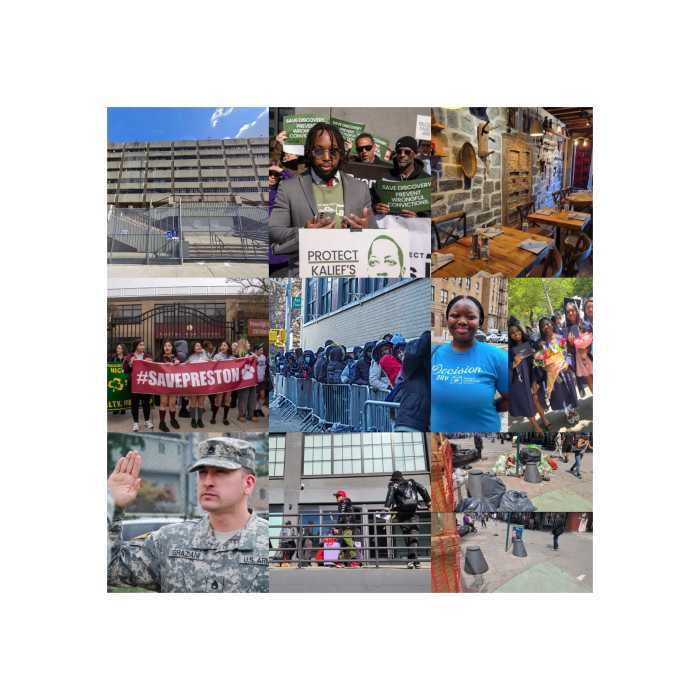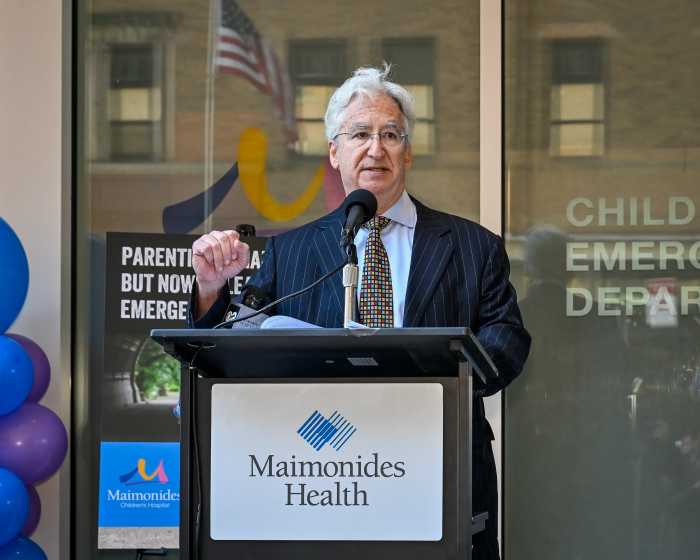At the south east entrance of Central Park, along 60th Street and 5th Avenue, sits Doris Freedman Plaza, named after the late founder of the Public Art Fund. Despite not being officiated until 1981, the plaza has served as a public art space since 1977;
For the first time in almost 50 years, the work of a Puerto Rican artist graces the space.
“We found out that the artist is Latina, and lately, that has been something that I’ve been in a deep dive in with my own Latina-ness,” said Dalia Laurencio, who was at the opening ceremony on Wednesday, Sept. 4. “I’m half-Mexican and half-Cuban so, it’s really nice to see my people being celebrated and have their artwork represented.”
On the heels of Hispanic Heritage month, Edra Soto’s latest iteration of “Graft,” a series she began in 2013, introduces an architecture both foreign and familiar to the New York City landscape. What looks like a seating area with a creative set of tables and chairs, reveals itself to be imbued with abstractions of Soto’s nostalgia for her homeland.
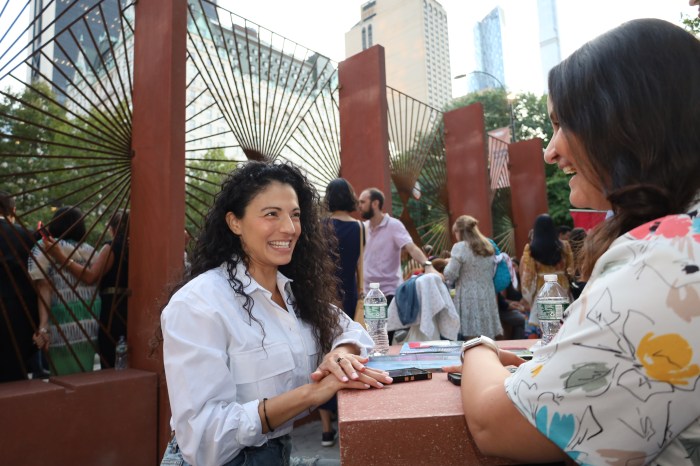
“Graft is also used to describe a skin transplant so, I started thinking about it in terms of an imaginary transplant,” Soto told amNewYork Metro of her artistic work. “I started using the patterns, the motifs of the houses, as a way to create architectural interventions that allow me to express my history of migration and how to integrate myself in places outside of Puerto Rico.”
Soto grew up on the island until she was in her mid-20s and received her MFA from the Art Institute of Chicago, where she currently lives and where she and her husband run The Franklin – an artist-run project at Garfield Park.
Her“Graft” series harkens the aesthetic of the wrought-iron porch enclosures ubiquitous across the Caribbean island. Standing at about 15 feet tall and 20 feet long, the stenciled wall made of terrazzo and corten steel, repeats a geometric sunburst pattern across it, imbuing a memory of religion and spirituality, according to Soto. The space between the patterns is void, allowing for air to flow through, similar to the rejas and quiebrasoles aka iron bars and breeze blocks, respectively, common throughout home façades of Puerto Rico.
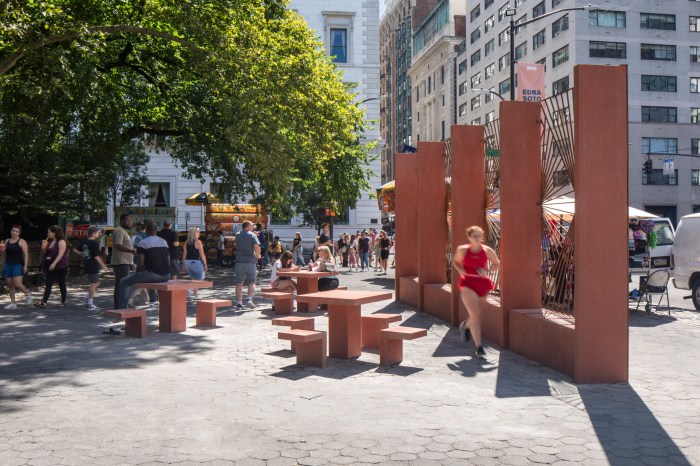
On the north side of the sculpture, tables and chairs, made of the same material, invite passersby to take a respite and become friends with strangers. Much like Christina Lynch from Brooklyn, who was sitting at a table with some women she had just met, which was Soto’s objective with this public artwork.
“It will come to life as soon as people are interacting with it,” Soto said.
On the south side, one can see through the wall and view whoever is sitting at the tables, like driving down the streets of Carolina, Fajardo or San Juan in Puerto Rico, where it’s never winter and locals sit on their porch and watch the world go by.
Despite its ubiquity across the island, the origin of this architecture is not common knowledge, which piqued Soto’s curiosity. In her quest for information, she came across the writings of architect, Jorge Ortiz Colom. In his work, “The Essence of Puerto Rican Historic Architecture,” Colom delves into the influence of the indigenous peoples of Puerto Rico, as well as the impact of Spanish colonization and the West African slaves brought in by the Spanish, who themselves, brought ideas from their homeland to assimilate into this new space.
“My argument with my work is why not consider things that are grounded with the lower and middle-class communities and the communities of Puerto Rico in general,” said Soto.
Commissioned by the Public Art Fund, “Graft” will stand at Doris Freedman Plaza through Aug. 24, 2025.
